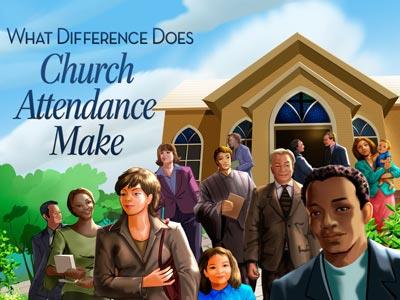-
Building A Confident Church Series
Contributed by Timothy Peck on Nov 28, 2017 (message contributor)
Summary: Five essential "bricks" for building a confident Church.
When this church finally decided to build our new worship center back in 1996 all my pastor friends told me to pack my bags. One of my former seminary teachers suggested that I update my resume. You see, building projects have a reputation for tearing churches apart. And through the years a general pattern has emerged, that by the time the building is actually built, the teaching pastor’s either too exhausted to go on or the congregation is sick of him. So the pastor either ends up resigning or being fired.
Now fortunately none of that happened--and though our building campaign and construction was tiring and challenging--it was also a time of great blessing. But I’ve often wondered why it is that putting up a building so often causes the church to fall apart. You see, the building is just the outward shell. The real church is the people, and the facilities are just our place to meet, the tent that keeps us dry when it rains, warm when it’s cold, and cool when it’s hot.
Because the real church is the people, not the building, the Bible doesn’t really say much about building programs. But the Bible does command followers of Jesus Christ to build the church. For instance, the Bible calls the church--the community of God’s people--God’s building (1 Cor 3:9). First Corinthians 14:12 contains a command to all followers of Jesus Christ to strive to build up the church. My job description as a pastor in Ephesians 4:12 is to equip church members to serve in ministry so that the church might be built up. So building a church is a biblical concept, but this kind of building has very little to do with bricks, drywall or carpeting. Instead, building the church has to do with the community of people.
We’ve been in the midst of a series through the New Testament books of 1 and 2 Thessalonians called LIVING CONFIDENTLY IN UNCERTAIN TIMES. With we’ve been talking about how the Bible anchors our confidence, not in computers or a strong economy, but in a relationship with Jesus Christ. Because Christ has opened the way for us to know God and because our future is secure through Christ, we can be confident no matter what the future holds…even today, 42 days before y2k. Today as we finish 1 Thessalonians and get reading to start 2 Thessalonians next week, we’re going to look at how to build a confident church. We’re going to talk about five bricks that are each absolutely necessary to build a confident church.
1. Our Leadership (1 Thess 5:12-13).
The first brick is CONFIDENCE IN OUR LEADERSHIP. We see this in vv. 12-13.
Here Paul’s talking to the entire congregation--all the members--about their attitude toward the leadership. In some ways the Thessalonian church isn’t much different than churches are today. Here we find a group of people in v. 12 who "work hard," those men and women who sacrifice their energy, their time, and their money to make the church’s ministry happen. The word for "work" Paul uses here has the idea of manual labor, of toil and sweat (Louw and Nida 42.47; Stott 119). As we’ll see in a few minutes, there was also a group of people who weren’t doing anything. So the church in Thessalonica was probably like most churches in our culture today: 20% of the people were doing 80% of the work. Those who were working hard were probably feeling under appreciated, and the rest of the congregation was taking them for granted.
Paul further defines this group of people--the workers--as those who were "over" the Thessalonians. They were spiritual leaders in the church, those who admonished the Thessalonians and taught them about God. This has led some people to identify this group as the church’s pastors or elders (Stott 119).
Paul doesn’t say to crown your pastors and elders as kings, but to "respect" them. The word "respect" in v. 12 actually means to "know" someone so well that you appreciate their true worth (Morris 165). So Paul is talking about a relational kind of respect here, which is consistent with v. 13 where he says to do this "in love."
But personally I think these verses are talking about a wider group than just the pastors and elders. To describe who this passage is describing let’s envision our church as a number of concentric circles (Warren, Purpose Driven Church). The biggest circle represents the unchurched in our community, those men and women who don’t yet have a transforming relationship with Jesus Christ. This obviously represents who we’re trying to reach with God’s love. The next circle is the crowd, which represents the people who are in a worship service on any given Sunday. This is a mixed group of Christians, seekers, skeptics, perhaps a few shoppers who thought they were going to Albertsons and turned the wrong way. The next circle is the congregation, which represents those who’ve taken the step of church membership. These are people who’ve decided to make this their church home, they’ve gone through our Meet LBF seminar, shared their profession of faith in Jesus, and made a membership commitment to our church family. The next circle is the committed, which describes those who are committed to the spiritual disciplines necessary for spiritual growth. We go over these spiritual disciplines in our "Discovering Spiritual Maturity" 201 seminar. Finally there’s the core, which represents those in our church who serve in ministry with people. We offer our "Discovering My Ministry" 301 seminar to assist people in this process.

 Sermon Central
Sermon Central



